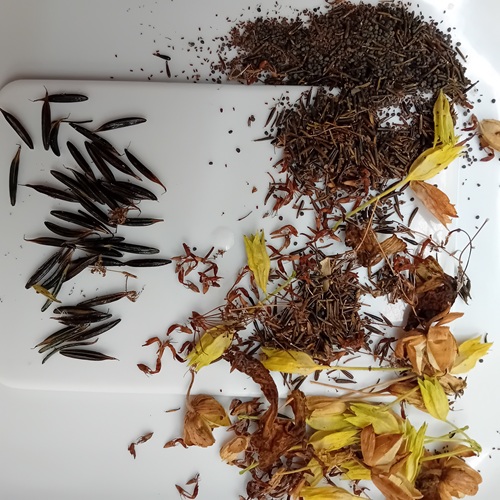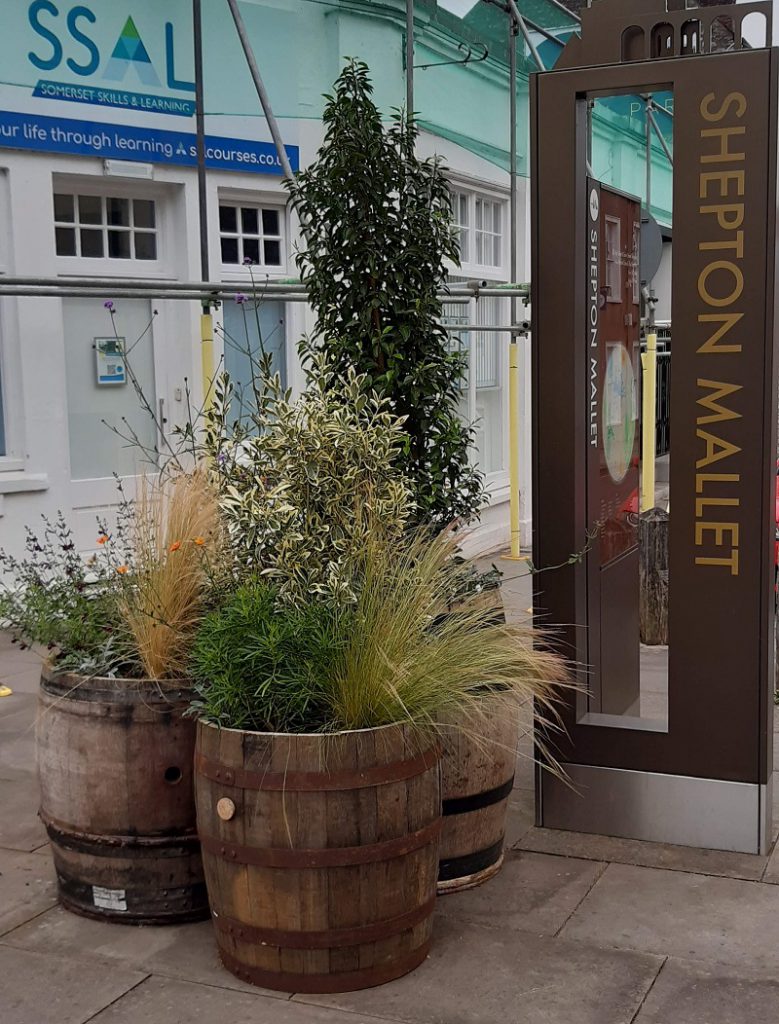I am taking shelter in my cool office but I am enjoying my garden late in the evening and early morning. Watering aside, there is a surprising amount of jobs to do this time of year.
Seed collecting
I have been cutting my wildflower area and collecting seed from my allotment margins with a view to enriching my wild flower area in the autumn as soon as the soil is moist again.

Trimming
The evergreen shrubs, topiary and hedges need pruning now, quite a big job and producing lots of waste for the compost bins! In June, I started to clip some of the evergreens as Niwaki (cloud pruning), this is fun and the faster growing Escallonia is responding well which is very satisfying. The Osmanthus burkwoodii is slower growing but I am hopeful for good results in time.
Taking charge
I have also been taking an objective look at my garden, I like self seeding however it is very easy to let everything get out of balance, grow too big, for example the Amenanthele lessoniana and Libertia formosa or get too untidy (e.g. Sisyrinchium). I realized the other day that just like hoarding ‘stuff’ in the house this occurs to a degree in my garden too!
Watering
In the spring, we installed two large 800 litre water butts, one for the front garden and one for the back. I knew these would not suffice during a drought but it is a first step in trying to reduce use of mains water which has a cost both environmentally and financially (energy has been used to treat, chlorinate & pipe it…). I am now resorting to using grey water from the kitchen sink on key plants as well as a bit of hose pipe watering early in the morning when it is a joy to be outside (witnessing insects, bird song, a hopping frog…).
All season, I have been mulching the gaps between the plants with home made compost and woodchip because my motto is “for a plant to thrive the soil must be alive” which means feeding the billions of soil bacteria and micro organisms with organic matter. They are the ones ultimately who care for our plants – feed them not the plants.
In my vegetable garden, it is the hardest to keep on top of the watering so I am having to let my plants struggle a bit. I did water the peas and beans when they were in flower as this is when they need water most to set the pods. I grow French beans rather than runner beans because they are more drought tolerant and similarly I grow pumpkins and winter squash rather than courgettes.
I have also been trying to keep my vegetable beds weed free, Charles Dowding is meticulous about this as weeds use up a lot of the soil water.
I can’t bear to see plants wilting and stressed by lack of water but I have to grit my teeth a bit and have faith in nature. Already I have witnessed the Euonymus ‘Bravo’ in the town planters defoliate to the point that I thought they were completely dead but they have now bounced back with some watering by the town rangers.

A period of drought really reminds me how much water goes into growing vegetables / food and how much I use in the kitchen, let alone the bathroom. It reminds me of how lucky we are to live in this part of the world too.
The RHS has a lot of information about watering and drought as does Charles Dowding.